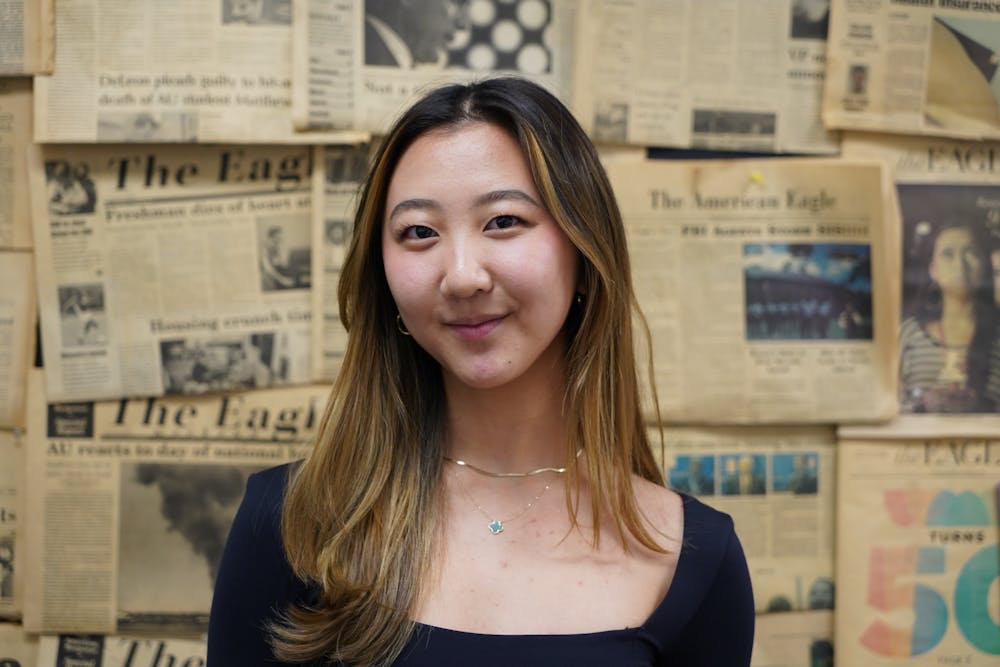The following piece is an opinion and does not reflect the views of The Eagle and its staff. All opinions are edited for grammar, style and argument structure and fact-checked, but the opinions are the writer’s own.
As a Japanese American, I have always felt my connection to Japanese culture to be strong but not 100 percent. If I were to label it on a spectrum — with zero representing complete assimilation into American culture and ten being little to no integration — I would place myself at a seven. Coming to American University, I was satisfied with the diversity of the school at first but found myself on the hunt for those who were in the same range as me on that spectrum. I soon discovered that the Japanese American students I encountered were very far away from me on either end. There was no one that I could share the comfortable number seven with, especially at a predominantly-white institution.
Growing up in a household with immigrant parents, I was surrounded by Japanese culture and sent to a weekend school to learn Japanese for 11 years. However, the high school I attended was extremely white and conservative in a small town called Somers, New York. This particular experience led to frantic searching on “the most liberal colleges to apply to in the country,” hence my current student status here. I naively believed that I had escaped a person of color’s worst nightmare and was grateful it put me on a path toward a school on the opposite political spectrum. However, my time at such a small, white, Catholic school left me with the delusion that I was invincible against a PWI. Although the American University student population is over 50 percent white and only about five percent Asian, I thought since AU is “different,” I would be able to find some more ties to my culture than I did in high school. I did not realize that such a different environment and incorporating new perspectives and people into this chapter of my life would completely alter my mindset about my sense of belonging.
The racial demographic in my high school left the bar on the floor when it came to my expectations of diversity in a college. My first time on campus, I had an overwhelming sense of joy and pride that the school I chose provided me with more people of color than I had ever experienced. Although I had gone to a weekend school my whole life where we would learn Japanese with other Japanese students, the solid and loving community I had created in my high school led me to think that the lack of exposure to people of my own culture would not be that big of a deal. The joy I felt of finally being around other POC on my campus only lasted so long, and I joined the Asian American Student Union to fill the void for a community that understood my culture. As with my initial shock when stepping foot onto the AU campus, I was elated at AU’s Asian community.
However, I soon reverted to the question of where I truly belonged. Although I am extremely grateful for the wonderful relationships I have developed in the club, I still felt as if I was missing something, especially because I did not discover any Japanese American students to share niche cultural similarities with. As the year went on, I encountered multiple Japanese people at AU who were part of an exchange program between AU and a school in Japan. Although I made efforts to connect, they were still a 10 on the spectrum while I was only a seven. The values we shared differed from our respective cultural and environmental influences. Although a seven and 10 may not seem too different, I never felt the sense of “home” in them. This also applied when meeting Japanese Americans who were more assimilated into American culture than I was. Each and every person I met was a wonderful individual, and yet, when it came down to finding a community that understood me, I was and still am lost to this day.
From my experience, affinity groups may not always be the one solution or place to find the specific community you are searching for. Joining a group with people of intersecting cultures or even being of the same descent is not a quick and easy fix to finding “your” people. This is not at all the fault of anyone in the group, but it certainly makes me reflect on the multi-layered struggle to find a community, even in your own culture. Especially at a PWI, the lack of diversity in people on the “spectrum of integration” makes it difficult to find those in a similar range as you.
Sara Shibata is a sophomore in the School of Public Affairs and School of Communication and a columnist for The Eagle.
This article was edited by Alana Parker, Zoe Bell, Jelinda Montes and Abigail Pritchard. Copy editing done by Luna Jinks, Isabelle Kravis and Charlie Mennuti.





